Amid uptick in kidnappings, Colombian family receives ‘biggest gift of all’
Colombia has experienced a surge in kidnappings in 2023, but negotiations with armed groups might herald a breakthrough.
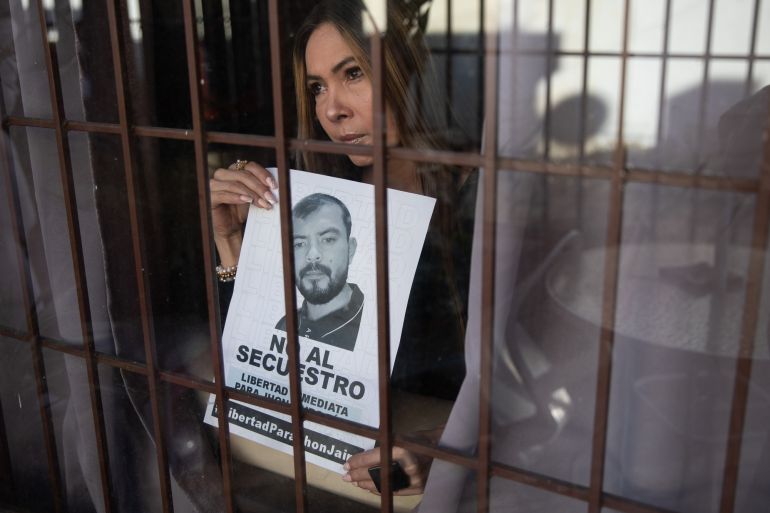
Chia, Colombia – Decnis Diaz was at home in Chia, Colombia, on November 18 when she received a call from her siblings: Her beloved younger brother, Jhon Jairo Diaz, had been kidnapped.
A 34-year-old store manager, Jhon Jairo was ending his shift at a meat market in Cucuta, a border town near Venezuela, when four masked men held him at gunpoint and dragged him inside a black sedan. Security cameras captured the vehicle speeding away.
Keep reading
list of 3 items‘Rude awakening’: Elections seen as rebuke to Colombia’s Gustavo Petro
Father of Liverpool’s Luis Diaz kidnapped by rebel ELN, Colombia says
“I couldn’t believe it. It always seemed to me that kidnappings were a terrible crime, but I never thought that our family would be a victim of it,” said Diaz.
Jhon Jairo was the latest victim in an unexpected crime trend: The number of kidnappings has shot up recently in Colombia.
Between January and October, a total of 287 people were abducted, a 73-percent increase over the same period the previous year, according to the Defence Ministry.
Once a widespread tactic in Colombia’s decades-long internal conflict, kidnapping has long been a source of income for the country’s armed groups, who charge an extortion fee in exchange for the hostage’s safe return. The ransom, in some cases, can amount to hundreds of thousands of dollars.
But the rate of kidnapping had plunged following a 2016 peace deal between the government and the Revolutionary Armed Forces of Colombia (FARC), the country’s largest rebel group at the time.
The practice is once again on the rise, though. The number of abductions this year — expected to be the highest since 2016 — has shocked many Colombians, some of whom believed the crime had all but died out.
“We thought that kidnappings were something from our parents’ generation,” said Ana de la Peña, whose husband Fabián Arias was kidnapped on October 2 outside his mother’s house in Ocaña. “But the dark past that we didn’t want to remember has returned.”
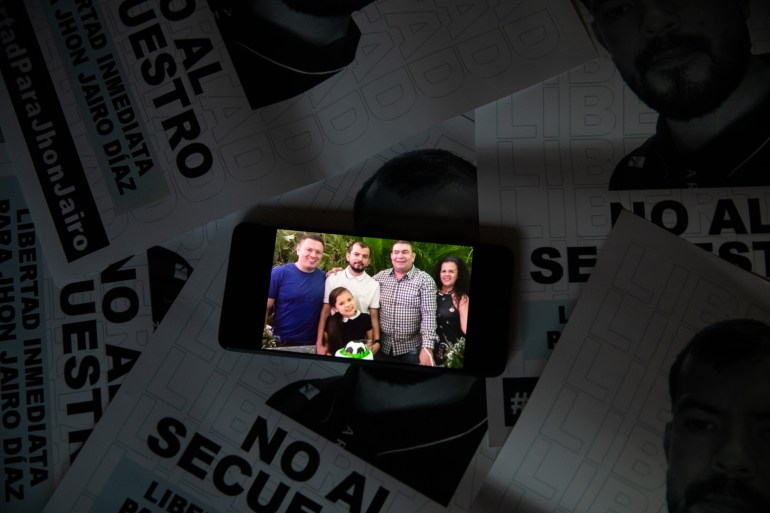
A dip and a rise in cases
For decades, the FARC had been the primary perpetrator of kidnappings in Colombia, responsible for an estimated 40 percent of the abductions between 1990 and 2018.
But the 2016 peace deal resulted in the FARC disbanding as an armed force. Immediately afterwards, kidnappings started to dip, reaching a low of 92 in 2019.
That downward trend, however, reversed as Colombia experienced renewed violence.
Rival armed groups and criminal networks rushed to fill the power vacuum the FARC had left behind, capitalising on the opportunity to take over its illegal drug and mining ventures.
Kidnapping, experts say, became an important tool to finance their growing ranks.
Critics have also blamed the increase on President Gustavo Petro, who took office in 2022 as Colombia’s first left-wing leader. A former rebel fighter himself, Petro pledged to improve security through peace talks, a strategy he calls “Total Peace”.
To participate, armed groups had to agree not to murder, torture or “disappear” civilians during the negotiations. But the agreement does not explicitly ban kidnapping — a loophole that critics say groups may be exploiting to maintain control over populations and turf.
“What we’ve seen in a lot of cases is that [armed groups] have traded that overt, visible violence for much more silent and invisible social control,” said Elizabeth Dickinson, a senior analyst for the think tank Crisis Group.
Kidnappings are “extremely powerful in silencing the population because you create an atmosphere of fear and of compliance”, she added.
Many abductions unfold without much public pushback because they are often kept out of the news, said Tatiana Prada, a researcher at the Ideas for Peace Foundation. Relatives are usually afraid to speak out, for fear their words could endanger the hostage’s life.
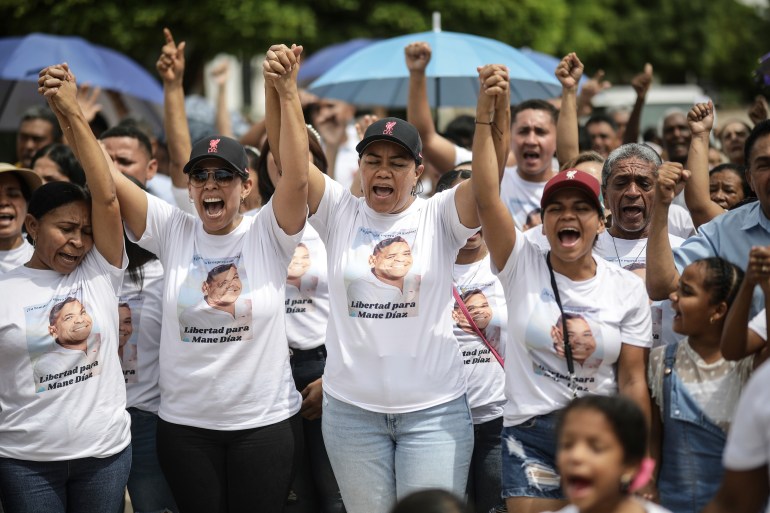
Lobbying for a loved one’s freedom
But one high-profile case catapulted the issue to national attention. In late October, the National Liberation Army (ELN) — Colombia’s largest remaining rebel group — kidnapped the parents of Liverpool FC striker Luis Diaz, a popular Colombian football player.
While his mother was found within hours, his father remained missing for 12 days, sparking a nationwide manhunt. Public outrage reached such a fever pitch that the ELN released Diaz’s father, calling the abduction a mistake.
“It brought to light what was already the reality, which is that kidnappings had continued unabated despite negotiations,” said Dickinson. “The question that comes up is: ‘Why are we negotiating with these groups if they’re not changing their behaviour?’”
Fearing government inaction, families have since taken it upon themselves to organise grassroots campaigns to bring their loved ones home.
Diaz, for instance, spoke about her brother Jhon Jairo on the Senate floor, calling on politicians to act faster to save her brother.
If public pressure could help secure the release of a football player’s father, she figured it could work for her brother, too.
“With all my heart and tears in my eyes, I beg you to help me,” Diaz told a room full of senators. “Do not leave us alone.”
Jhon Jairo’s family and friends also hosted a vigil in his hometown Cucuta, using hundreds of candles to spell a message: “Liberate him.” The local priest even held a mass in his name.
De la Peña, whose husband Arias was kidnapped, likewise launched a campaign to push for her spouse’s freedom.
On the social media platform X, de la Peña shared photos of their five-month-old daughter wearing a white onesie stamped with a picture of Arias and a message: “Free my dad. We want him home.”
The Office of the High Commissioner for Peace confirmed in November that Arias was being held by the ELN — the same group that kidnapped the football player’s parents.
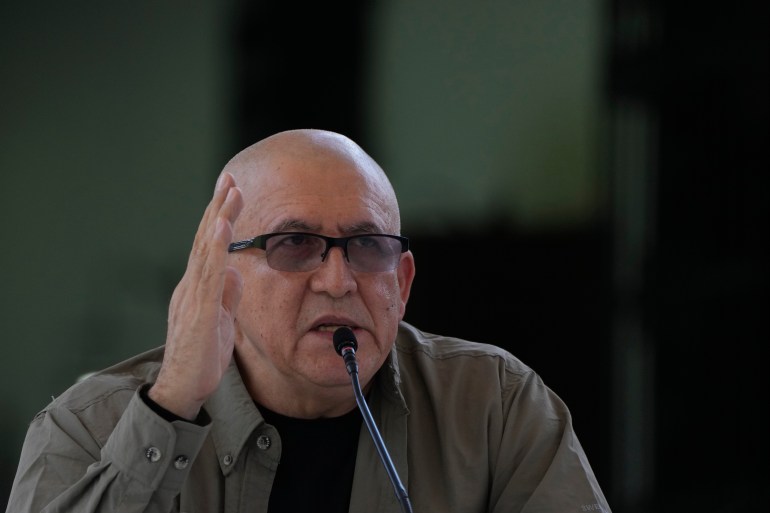
Kidnapping as an income stream
The ELN had long rejected demands to stop kidnapping civilians, citing its use as a revenue stream. On social media, Antonio Garcia, the ELN’s top commander, even questioned whether the term itself applied to the group’s actions.
“The ELN does not carry out kidnappings,” Garcia wrote, saying his group “only takes prisoners and detainees”.
He also described kidnapping as the “withholding” of civilians for “tax purposes”.
Defence Minister Ivan Velasquez was quick to rebut that framing. He told reporters that detaining civilians unlawfully, even for economic purposes, was still kidnapping.
“There is no discussion in this, nor can we debate the terms,” Velasquez said. “It is what it is.”
However the ELN and other armed groups have since shifted their stance. On December 11, the Estado Mayor Central (EMC), an armed group composed of former FARC members, signed a bilateral agreement with the government to end kidnappings for ransom.
The ELN followed suit. On December 17, its leaders likewise agreed to suspend kidnappings for ransom once a temporary bilateral ceasefire is reinstated in January.
But the breakthrough was not without criticism. Neither the EMC nor the ELN said if they would release hostages already in their custody, a fact which provoked scepticism — even within the government.
“It’s not enough to say that they are going to stop kidnapping. They have to hand over hostages,” said Velasquez.
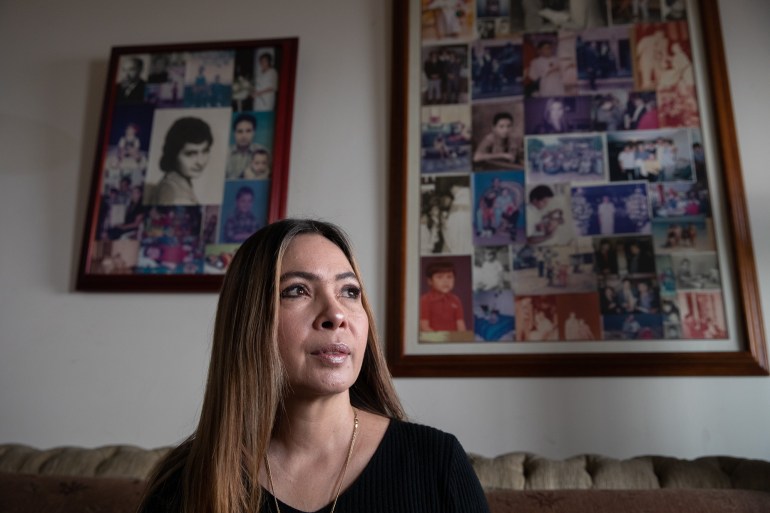
A long-awaited homecoming
According to the Ministry of National Defence, the ELN is currently believed to be holding 38 hostages. A total of 91 civilians remain in captivity across all of Colombia’s armed groups and criminal gangs, according to the Ombudsman’s Office, although underreporting is common.
Amid the uncertainty, however, the Diaz family received some unexpected good news this month, just weeks before the Christmas holiday: Jhon Jairo had been released.
“He came back traumatised, but we’re thrilled to have him home,” Decnis Diaz told Al Jazeera a day later.
De la Peña likewise saw the return of her husband Arias a day later, on December 12.
“Welcome to freedom, love of my life,” she wrote on social media, posting a beaming selfie with her arms wrapped around him.
This Christmas, Diaz said her relatives were travelling from every corner of Colombia to Cucuta to spend the holiday together as a family, with Jhon Jairo.
“Neither money nor material goods can replace the feeling of love and family unity,” said Diaz. “To have Jhon Jairo back home for Christmas is the biggest gift of all.”